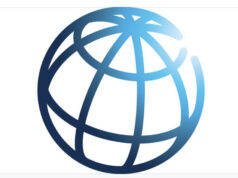Goitom Gebreluel & Biniam Bedasso
Nemera Mamo is a co-author of this article. He is a teaching fellow at SOAS, University of London.
Ethiopia has been experiencing recurrent mass protests, riots and ethnic conflicts over the past two years that have claimed the lives of thousands and displaced hundreds of thousands.
These events have led observers and members of the ruling Ethiopian People’s Revolutionary Democratic Front (EPRDF) to conclude that the very survival of the Ethiopian state is at stake.
State collapse is so far an extreme and unlikely scenario given that the conflicting parties are internal actors in the system and have a vested interest in its survival. A more likely but still dangerous scenario is a long-term vicious cycle of political conflict and economic stagnation that cripples state and society.
Much of Ethiopia’s appeal to global investors lies in the high-level political commitment to economic growth. Political instability risks eroding the hard-won economic gains it has registered over the past decade.
Analysts and the international community have often attributed the current crisis either to Ethiopia’s ethnonational federal system or the near total curtailment of political space since the disputed parliamentary elections in 2005.
While political liberalism is a moral imperative on its own accord – and long overdue – it is, nevertheless, an insufficient solution to the political quagmire that the Ethiopian state finds itself in. The ethnonational federation is also not the primary source of the problem, and its abolishment is neither desirable nor a realistic proposition.
The government’s response to the problem has also been inadequate. It has primarily attributed this to corruption and a stalled democratic process. Based on this diagnosis it has taken important yet inadequate measures such as releasing political prisoners, initiating dialogue with opposition groups and demoted officials.
Managing Ethiopia’s current political crisis requires going beyond democratic reform and instead thinking about the political economy and institutions that shape elite competition along ethnic lines. The two most important reform measures that should be embarked upon immediately in this regard are devolving more power to the regional states in accordance with the Constitution and de-ethnicising elite competition at the federal level.
More power to the regional states
Ethiopia is suffering from a political economy crisis at the heart of which is the contradiction between the EPRDF’s developmental state model and the constitutional ethnonational federation. The Constitution grants the regional states extensive rights to self-determination in economic, cultural and political matters even to the extent of secession.
In terms of fiscal autonomy, it provides them with the power to levy a wide range of taxes on economic activities occurring within their territories.
The EPRDF’s governance model, on the other hand, has been characterised by rigid long-term planning and centralised policy-making. Its primary purpose has been the pursuit of a structural transformation of the economy from an agriculture-dominated to one wherein industry holds a substantial share.
The contradiction between the developmental state and federalism has resulted in the objectives of the latter being compromised.
Regardless of the great lengths to which the Ethiopian constitution goes to grant regional states access to a number of tax instruments, the revenue generating capacity of the regional states has been consistently low due to the centralising tendencies of the developmental state.
This has led the regions to heavily rely on subsidies from the federal government to finance public goods. Moreover, through its many parastatals, the government is encroaching upon what could have been the tax jurisdiction of the regional states.
Ethnic politics is not a necessary evil that Ethiopia has to live with – it is rather an existential threat.
The conflict over Addis Ababa’s large-scale urban development plan that sparked mass protests in 2015 is another example of the encroachment of the federal government on the jurisdiction of the regional states.
Regional officials accused the federal government of denying them the right to participate in devising an urban development plan that had economic implications. This dispute sparked the protests, which eventually led to a u-turn on the plan by the government, but only after a great human, political and economic cost had been incurred.
A combination of a lack of transparency and corruption scandals has led to an increasing feeling that Ethiopia’s wealth is not fairly distributed or properly managed at the federal level.
In pursuing a highly centralised development policy-making process, the EPRDF has underestimated the potential consequences of resistance from the general population and officials in regional states that feel disenfranchised by particular policies.
The current quagmire shows that there is a need to balance economic ambitions with political realities. Ethiopia needs to devise a more dynamic approach to decentralisation that is more responsive to changing political economy conditions.
The regional states currently have virtually no capacity in tax legislation. The federal government should work with the regional states to remove legal, administrative and political constraints that have prevented the regions from fully exploiting their powers of taxation. This policy would also contribute to holding the leaderships in the regional states more accountable by their own constituencies.
De-ethnicising elite competition
Competition for power and resources at the federal level has taken place along ethnic lines and much of the violence that shook the country has been tied to disputes between groups within the ruling party. This political elite competition is not an inescapable function of the federal structure, but rather, an outcome of the nature of political party organisation and practice.
Under the EPRDF’s rule, the party and state structures have – though de jure separate – in practice, become intertwined. One of the consequences of this merger has been the employment of state resources as a currency for the ruling party to maintain and increase its large body of party members.
State rents tied to political and bureaucratic appointments have, particularly after the controversial 2005 parliamentary elections, been an important incentive for increasing the membership of the ruling party from around 700,000 in 2005 to seven million in 2015.
Given that the four constitutive parties of the front are organised along ethnic lines, the distribution of economic and political resources have also taken place through ethnic-based patronage structures (this includes both the legal distribution of official posts in the government, as well as the illicit benefits accrued through some of these positions).
The distribution of power and resources in everything from seats in the cabinet to leadership positions in universities are often based on an informal ethnic quota system. Any form of inequality that emerges in access to administrative positions, state rents and illicit benefits, therefore, assume a communal ethnic character.
In the process of competing for power and resources, party officials on all sides have consistently and systematically framed disputes in nationalistic terms and mobilised their ethnic constituencies. Political elite competition has consequently spilled over into communal conflicts that have led to mass violence and displacements.
Ethnic politics have in general also come at the expense of meritocracy and economic efficiency. Most importantly, it has also provided the four EPRDF parties with ethnic constituencies whose support are almost guaranteed through the perpetuation of a discourse of “ethnic-interests” and fear of other groups. Both conflicts within the EPRDF and with opposition parties are increasingly becoming devoid of substantive policy and ideological differences and revolve around ethnic group privileges.
Sustainable economic development and a functioning democratic and federal governance arrangement will be difficult to achieve in the current ethnicised framework of political competition.
The way forward must, therefore, involve a de-ethnicisation of competition for resources at the federal level. This is difficult but not impossible. The first and most important step in this direction must be to reorganise the ruling EPRDF from a front composed of four ethnonational organisations into a cross-ethnic and unitary party.
The EPRDF had in its origins an extensively formulated class-based ideology, which explicitly prioritised the interests of Ethiopia’s peasantry (which account for more than 80 percent of the working population). Over the last decade, its ideological commitment has weakened, and it has transformed into a party that tries to cater to various and contradictory interests.
This first step will necessitate a different resource and power distribution mechanism within the EPRDF, which will encourage new patronage structures and alignments within the party that cut across ethnic lines.
It will thus tame communal conflicts caused by competition between party officials and it will encourage the formation of opposition to the EPRDF that is cross-ethnic and based on a different ideological platform than nationalism.
Ethnic politics is not a necessary evil that Ethiopia must live with – it is rather an existential threat. And now, more than ever, it is the time to think about the possible institutional mechanisms that can contribute to transforming politics away from it.
There is no silver bullet that can de-ethnicise politics in Ethiopia. Instead, many individual measures such as those we have outlined above can, over time, make ethnicity a less salient and central feature of how people and politicians conceive of their political interests and how they mobilise for against power.

























